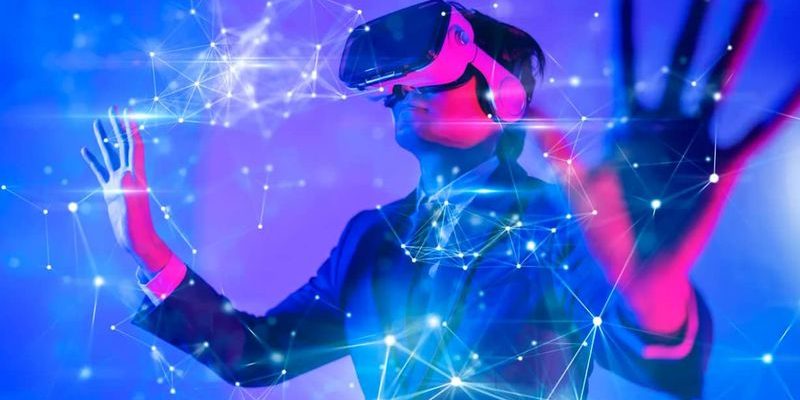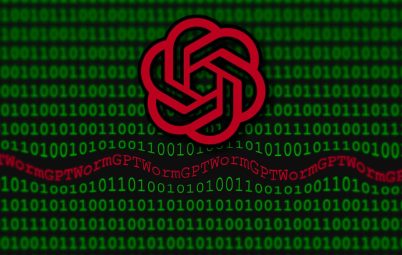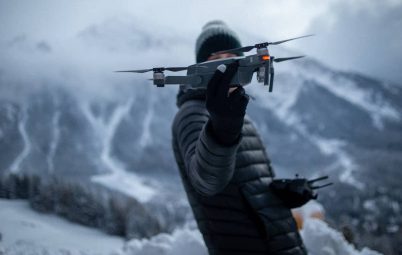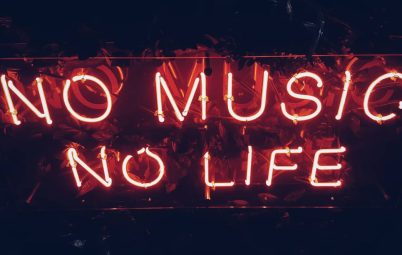For the different definitions of AR/VR/MR and XR, please take a look at our previous article on how VR/AR could change the game in 2023. It is still very early days for these new platforms and a lot needs to be proven if they are going to live up to the hype. However, a huge amount of commitment is being demonstrated from all the major tech companies right now that, once matured, these technologies will be the foundational future of the way we work, play & communicate with each other. For this article though, we will be focusing on the role of these technologies within the kind of content production we do at Sunday Treat.
VR
Let’s start off with VR as it’s already a far more mature technology than AR, and we have already produced a lot of VR content for various platforms.
360 Video
360 video was one of the first practical use cases of VR. With the early Oculus headsets, directors like Chris Milk have made big impacts with their 360 work which has the potential to create a far more immersive experience than traditional filmmaking. We have produced many 360 videos for clients, including a fascinating project for Virginia Tourism Board where we showcased the delights of a Virginia vineyard to a US government audience, complete with additional sensory experiences cueing smells of the various wines as they were shown in VR headsets. There are so many truly incredible 360 videos available for free online now, and the creative possibilities are ever evolving. Take a look at this Elton John music video which can be viewed through expensive VR headsets or just on your laptop or phone with a still novel element of interactivity.

Events
“Reality privilege” is a term I heard recently. You might live in an area with easy access to a stadium or museum, and the finances to be able to buy a ticket, but most of the world does not. Huge audiences have already turned up to platforms to watch live concerts in VR, with Travis Scott’s concert in Fortnite attracting over 12 million people who could not only watch the concert but interact with mini games & buy NFT merchandise. VR has the potential to open events up to the world as the technology and affordability improves, and these events will be both captured on 360 cameras and rendered in CGI.

Recce’s
As filmmakers at our core, we’re always looking for ways to streamline the production process. At Sunday Treat, we have a platform of tech applications that is ever evolving as we incorporate new cutting-edge technologies to speed up production for us and our clients. Another example of the use of VR/AR in filmmaking could be within location scouting. The recce (short for reconnaissance) process is incredibly useful to get an idea of the scope of a location before you shoot there. This can be useful for the producer, director, DOP, art director, gaffer etc… to get a sense for the space and how it connects beyond photos. VR/AR could be extremely useful for this, using a simple 3D scan of an environment, you can communicate the exact look, feel and dimensions of a location to a remote team or save it for later reference. We have been experimenting with similar setups for some fun TikTok videos recently. We used a simple iPhone app called Polycam to achieve this effect and whilst it’s still early days, it’s clear to see this application could be very useful for us.
Tourism Guides
Blending 360 camera & CGI could create near perfect representations of environments in the real world, for consumers to interact with before visiting in the real world. Imagine visiting your hotel before you go or previewing that new restaurant you heard about, that house you may want to buy or that hike you might want to go on. There could be a huge market in the near future for accurately recreating spaces in the real world to preview them to potential consumers.
The Volume
Whilst strictly not an VR specific technology, “The Volume” deserves an honorary mention whilst we’re talking content production technologies. It is the name for Industrial Light & Magic’s ingenious greenscreen replacement technology, essential in the production of the Disney Plus show, “The Mandalorian”. The technology covers the ceiling and walls of a soundstage with LED panels and the telemetry of the production camera calculates the required background for the scene. The advantages over traditional green screens are huge, including far more realistic reflections and an ability for the actors to better immerse themselves into the scenes. The Volume uses EPIC Games Unreal Engine to project its backgrounds, a technology that is becoming closer and closer to becoming indistinguishable from real life for far cheaper costs than previously available.

AR & The Metaverse
Okay, time to get a bit deeper into the speculative future with the less mature but quickly growing technology of Augmented Reality.
Content in the Metaverse
We will for a very long time undoubtedly still produce a huge amount of 2D content, but it is worth considering how this 2D content will be consumed in the near future. Platforms will likely evolve to project 2D content in a 3D Metaverse or as an AR overlay that can be viewed at a scale, placement and volume that the user chooses, similar to our various current devices.
Consider recording someone with a 3D depth sensing LiDAR camera which scans them into a digital avatar that you can then place onto your sofa at home, chatting to you whilst you do the cooking or walking with you to work. This could even be a retrospective process with AI machine learning scanning existing 2D content and creating an avatar out of it. You could imagine this avatar even being produced entirely from a voice recording so you can have your favourite podcaster visualised with almost perfect precision, or created entirely via deepfake technology. Scary stuff with some serious moral implications and it’s not far off at all with AI engines like DALL E 2 sending shockwaves across the world recently with its astonishing realism and artificially creative mind.
Bringing it back to what we do at Sunday Treat, let’s imagine a future where an interview is not recorded with professional grade camera & lighting, but instead a simple LiDAR scanner and some sophisticated AI algorithms. We could then change almost anything we want about the interview using CGI rendering systems like Epic Games’ Unreal Engine. We could pop it in a standard office and make it look completely realistic, give it an adaptive environment based on the context of the interview or even strip it out as an individual layer to incorporate the speaker as an overlay in your real world. Or, if we look to the incredibly sophisticated (and currently very poorly marketed and utilised) technology Meta is putting together with photorealistic 3D avatars,we can imagine a word in the near future where everyone already has a perfect scan of their face and an AI text-to-speech algorithm of their voice – so they can simply hand over a licence for a company content creator to do whatever they want with the content. Imagine Bruce Willis just signing a contract, handing over a digital likeness and sitting back letting the cash roll in whilst he is incorporated in an ad campaign. These are very real questions, and concerns facing society right now.

Web3
Let’s visit one more future technology which is less certain to materialise but fascinating in its potential. A still evolving term, the term Web3 generally refers to the next iteration of the internet powered by a decentralised blockchain rather than centrally controlled big tech companies. Within the tech industry it is defined in relationship to previous iterations as:
- Web1 – an internet allowing content to be viewed by users (early university networks and the first online encyclopaedias)
- Web2 – an internet allowing content to be viewed, posted and interacted with by users (modern social media)
- Web3 – a more decentralised internet owned by it’s users and recorded on the blockchain
Some background reading on Web3 and blockchain technology would be useful to get your head around these concepts, but lets just focus in on content creation for now. Imagine three related stages of content creation throughout human history:
Film & TV
From the golden age of Hollywood to the early 2000’s, practically all content was moderated and distributed by a tiny collection of companies and people. Famous film stars were anointed by powerful producers, a very limited amount of people could reach a status of celebrity and all content was strictly controlled for the primarily the financial benefit of small groups of individuals.
The Internet & Social Media
We now live in a world where anyone has the ability to achieve celebrity status through their own content and marketing. There are few gatekeepers, and if you can generate an audience, then you can have a huge influence and earn a lot of money. However, content creators are still somewhat beholden to social media platforms which host and promote their content and crucially collect billions in advertising revenue, sharing little with the creators.

Content Creation in Web3
So, now lets imagine a world where there are no social media gatekeepers, and instead audiences have a direct line of communication & funding with their creators. Using blockchain technology, tokens could be either purchased for cash, generated by voluntary advertising revenue or even by selling your browsing history & data. These tokens could then be awarded directly to creators based on how long content is watched. This sounds complicated, but with companies offering streamlined middleman systems, it will all be simplified. You could even imagine paying for your Netflix subscription via attention tokens that port over to Netflix as you watch minute-by-minute.
The potential here is less money and less control for big tech, with more for creators and audiences. A certain by-product would be more personalised and bespoke experiences with advertising. In 2022, you are already tracked by Google & other platforms all across the web, your data is harvested and sold to advertisers, and you have no control over it. With Web3 technology, a new evolution of the internet controlled by users rather than a few central companies, this data would be yours to do what you want with. You could open yourself up to an outrageously invasive AR celebrity selling you new workout gear as you walk to work, whilst you build up a few more of those tokens. You could opt out of advertising completely for a price, or you could have it more subtly incorporated into your world with a perfect integration into the content you already enjoy.
One thing that we will still need is great algorithms feeding us great content and entertaining advertising. These algorithms will need to be paid for somehow, and right now it’s easy to see why a company like TikTok costs so much to run every year with such sophisticated technology and engineers pioneering these algorithms – but in a very short amount of time, these algorithms and this software could become totally commoditised, allowing free access to all… and that’s one less reason we need these social media revenue-fuelled tech companies at all.
So what does this mean for the future?
It’s so hard to know exactly how these technologies will affect content production in the long term, but it is certain they will have a huge impact as the way people engage and consume content is set to radically shift in the very near future. With a lot of 360 content in our portfolio already, and plans to produce our first AR content in 2023 – at Sunday Treat, we can’t wait to be a part of what comes next! Our London video production company will be utilising exciting new technologies in our work as much as possible.



